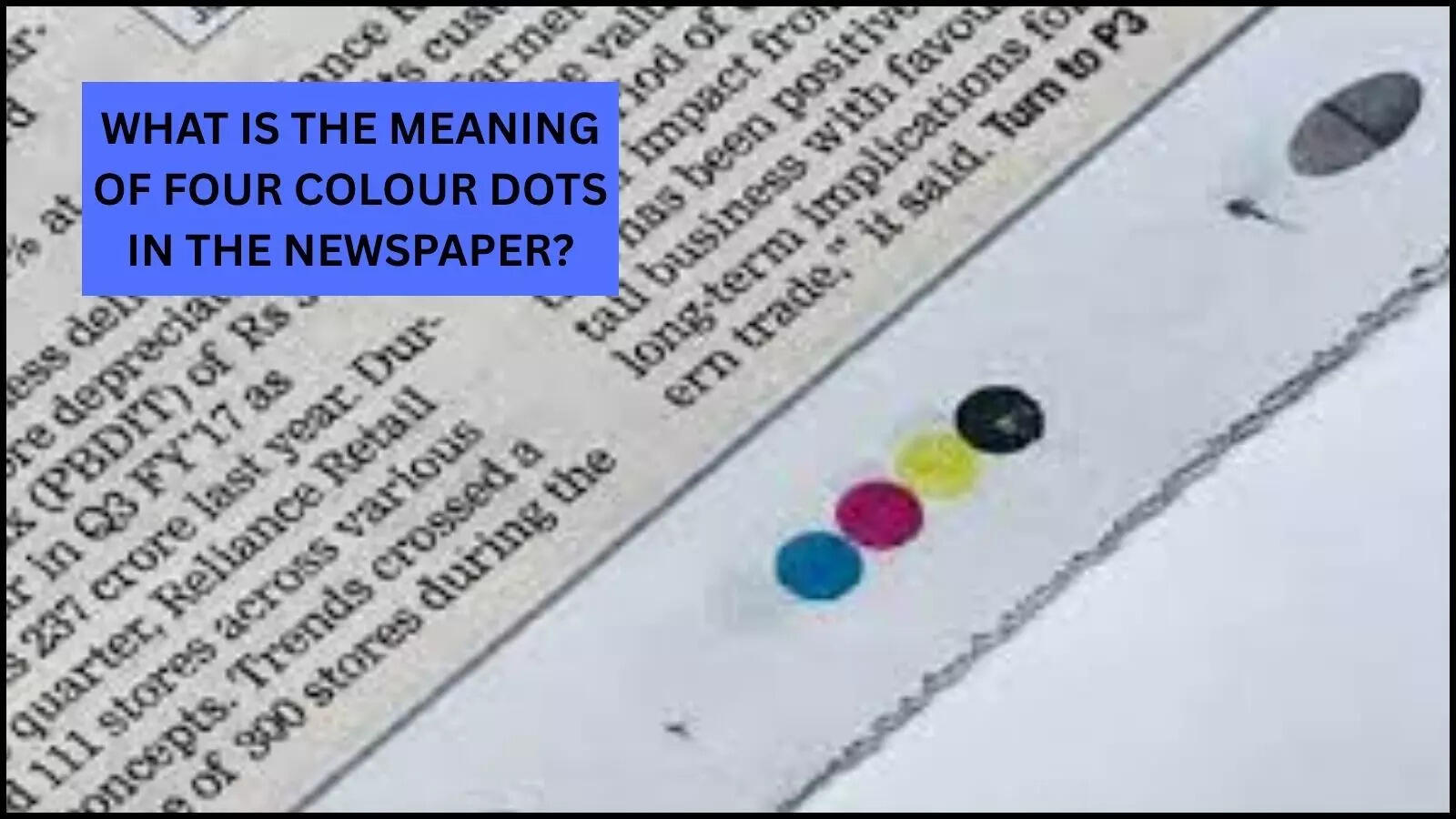Ever Noticed Four Dots In Newspapers? Here’s What They Mean
Most readers flip through a newspaper without ever spotting the tiny circles or shapes printed near the edge or bottom of a page. Yet, those coloured marks play a critical role in the printing process and aren’t there by accident.
Newspapers have long been a daily source of global updates, opinions, features, puzzles and advertisements. As printing technology advanced, colour pages replaced the old black-and-white format. Along with high-speed printing and vivid imagery came the introduction of colour control marks known as registration dots.
What Are These Dots and Why Are They There?
You might see them as small circles, stars or other shapes in different colours, placed at the margins of a page. Their purpose is tied to the CMYK colour model, which is used in commercial printing.
The four colours are:
Every image and coloured element in a newspaper is created by layering these four inks in varying proportions. Each colour is printed using a separate plate, and the dots act as alignment guides to ensure the plates line up correctly.
How Do They Help?
If the dots appear blurred, misaligned or doubled, it signals that the plates have slipped out of position. This can lead to fuzzy images, off-colour printing or shadows around text or pictures. Since millions of pages are printed at high speed—often up to 90,000 copies an hour, it’s impossible to manually check each sheet.
For experienced press operators, a quick look at these dots is enough to confirm if the print quality is on track. That’s why they are often referred to as registration marks or printer checks.
Why You See Them in Newspapers but Not in Books
Books also use the same CMYK system, but the sheets are trimmed down during binding. As a result, the colour marks are usually cut off before the final product reaches the reader.
Key Features of CMYK Printing
Those small colour marks might look insignificant, but they are a crucial quality control tool that ensures the newspaper you hold in your hands is printed cleanly and accurately.

Newspapers have long been a daily source of global updates, opinions, features, puzzles and advertisements. As printing technology advanced, colour pages replaced the old black-and-white format. Along with high-speed printing and vivid imagery came the introduction of colour control marks known as registration dots.
What Are These Dots and Why Are They There?
You might see them as small circles, stars or other shapes in different colours, placed at the margins of a page. Their purpose is tied to the CMYK colour model, which is used in commercial printing.
You may also like
 Surat Municipal Corporation to list Gujarat's first green bond on NSE on Oct 16
Surat Municipal Corporation to list Gujarat's first green bond on NSE on Oct 16- Nobel 2025: Is Trump's Peace Prize quest a one-sided affair or just getting started?
- 'All accused, including DGP, must be arrested': Punjab SCC on IPS official's death case
- Lemon vs amla for belly fat: Experts break down which one works faster and how to use it
 Krushi Vikas Divas: Mangiben from Dang becames Lakhpati Didi through Natural Farming
Krushi Vikas Divas: Mangiben from Dang becames Lakhpati Didi through Natural Farming
The four colours are:
- C: Cyan
- M: Magenta
- Y: Yellow
- K: Black
Every image and coloured element in a newspaper is created by layering these four inks in varying proportions. Each colour is printed using a separate plate, and the dots act as alignment guides to ensure the plates line up correctly.
How Do They Help?
If the dots appear blurred, misaligned or doubled, it signals that the plates have slipped out of position. This can lead to fuzzy images, off-colour printing or shadows around text or pictures. Since millions of pages are printed at high speed—often up to 90,000 copies an hour, it’s impossible to manually check each sheet.
For experienced press operators, a quick look at these dots is enough to confirm if the print quality is on track. That’s why they are often referred to as registration marks or printer checks.
Why You See Them in Newspapers but Not in Books
Books also use the same CMYK system, but the sheets are trimmed down during binding. As a result, the colour marks are usually cut off before the final product reaches the reader.
Key Features of CMYK Printing
- All printed colours are made by combining cyan, magenta, yellow and black.
- Tiny dots of each ink are laid at specific angles to build the final image.
- Each colour corresponds to a separate cartridge or plate.
- The system is cost-effective and ideal for large-scale printing.
- It remains the standard method for newspapers and commercial presses.
Those small colour marks might look insignificant, but they are a crucial quality control tool that ensures the newspaper you hold in your hands is printed cleanly and accurately.









